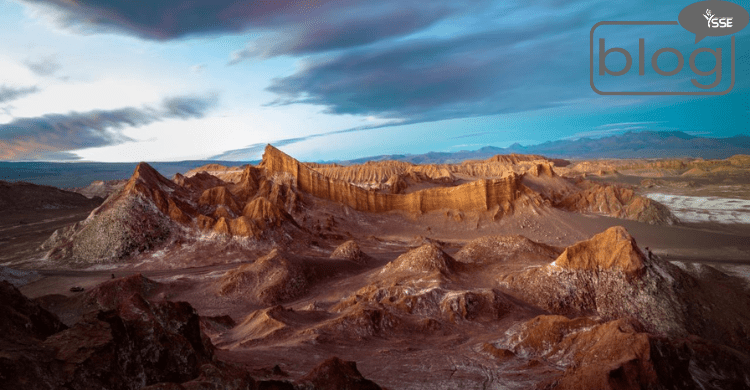The Atacama desert is situated on the Pacific coast of South America in the north of Chile. This desert has an area of 105,000 square kilometers, which increases up to 128,000 square kilometers if the lower slope of Andes Mountain is included. The most arid region of the desert is situated between the Andes and the Chilean Coast Range.
The Atacama desert is the driest non-polar desert, and the second driest all over the world. But it is the only desert receiving less precipitation than the polar desert and has the largest fog in the world.
On the east side of the desert, there is less arid area called Central Andean dry Puna ecoregion. The border of Peru is on the north side of the desert and on the south there is Chilean Matorral ecoregion. The latitude of this desert is -23.86degree North and the longitude is -69.13degree West.
Atacama desert might be the oldest desert and the aridity of this desert resulted in the rise of surrounding mountains. As the desert is mainly surrounded by the Andes and Chilean Coast Range, the height of the mountain provides the transportation of moisture from the Pacific and Atlantic ocean.
The desert has similarities with the Martian environment, which makes it prone to being an experimentation site for Mars expedition. In an area about 100 km (60 mi) south of Antofagasta, which has an average elevation of 3,000 m (10,000 ft), the soil has been compared to that on Mars. Due to its otherworldly appearance, the Atacama was used as a location for filming scenes from Mars, notably in the television series Space Odyssey: Voyage to the Planets.
NASA is using the desert to test instruments for future missions to Mars. The team duplicated the Viking tests in Mars-like environments and found that they lacked contemporary signs of life in soil samples from the Antarctic Dry Valleys, the Atacama Desert in Chile and Peru, and other locations. However, in 2014, a new hyper arid site, María Elena South, was reported to be much drier than Yungay and thus a better Mars-like environment.
Despite the geographical and climatic conditions of the desert, a rich diversity of flora has developed here. More than 500 species have been collected on the borders of this desert. These species are characterized by an extraordinary ability to adapt to this extreme environment. The most common species are herbs and flowers such as thyme, llareta and salsify (Distichlis spicata), where there is sufficient moisture, trees such as chañar (Geoffroea decorticans), pimiento and algarrobo deciduous trees.
The climate of the Atacama desert limits the number of animals permanently living in this extreme ecosystem. Some parts of the desert are so arid that no plant or animal can survive. Outside of these extreme areas, sand-colored locusts mingle with pebbles on the desert floor, and beetles and their larvae provide a valuable food source in quarries (hills). Desert wasps and butterflies can be found during the warm and humid season, especially at quarries. Red scorpions also live in the desert.
A small number of people live here, mostly in the towns along the Pacific coast. The desert is also enriched with minerals like copper, gold, silver and sodium nitrate. This desert is also in the top 3 tourist locations in Chile and the tourists dwell in the town San Pedro de Atacama.
To read more blogs like this, click here.
Writer :
K M Jahin
Intern,
Content Writing Department ,
YSSE

